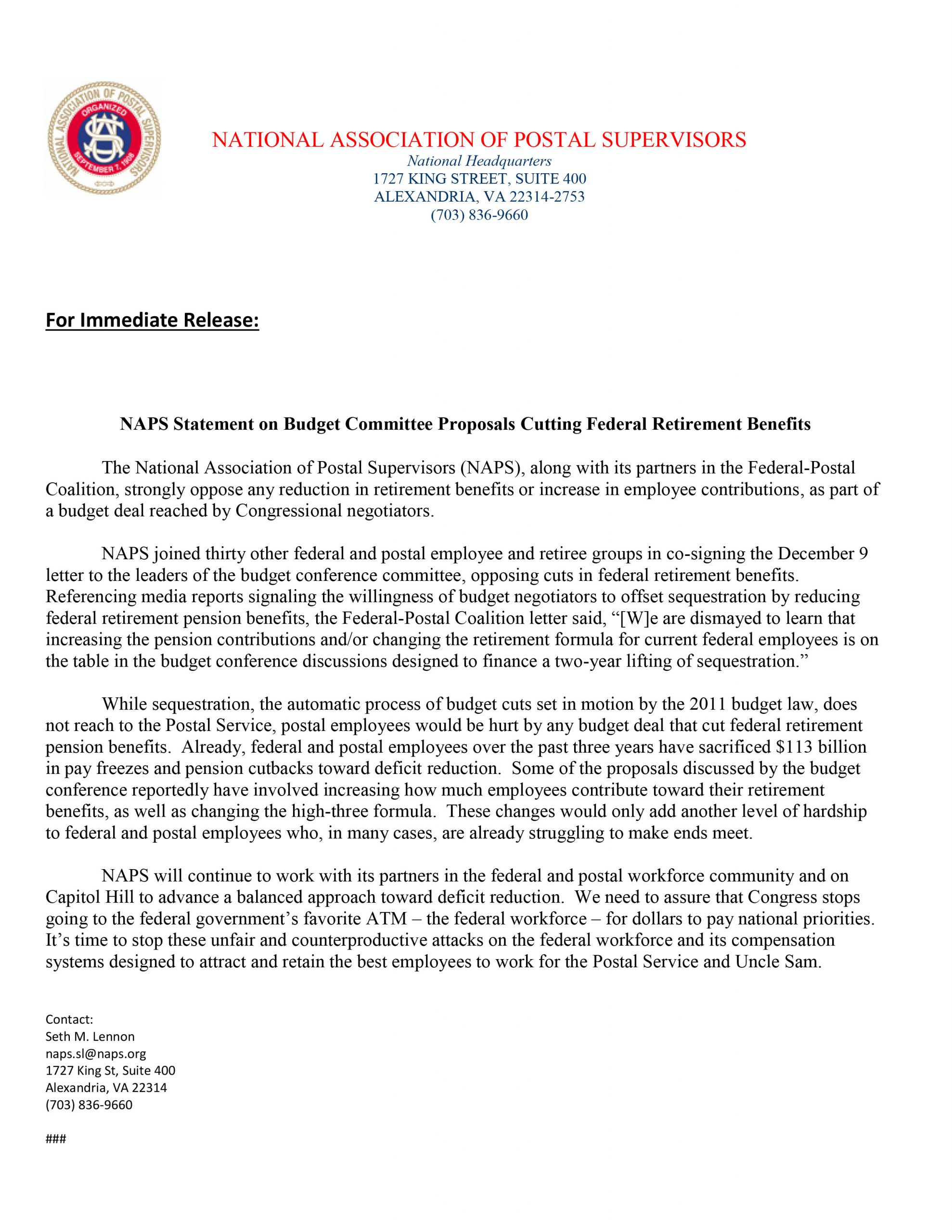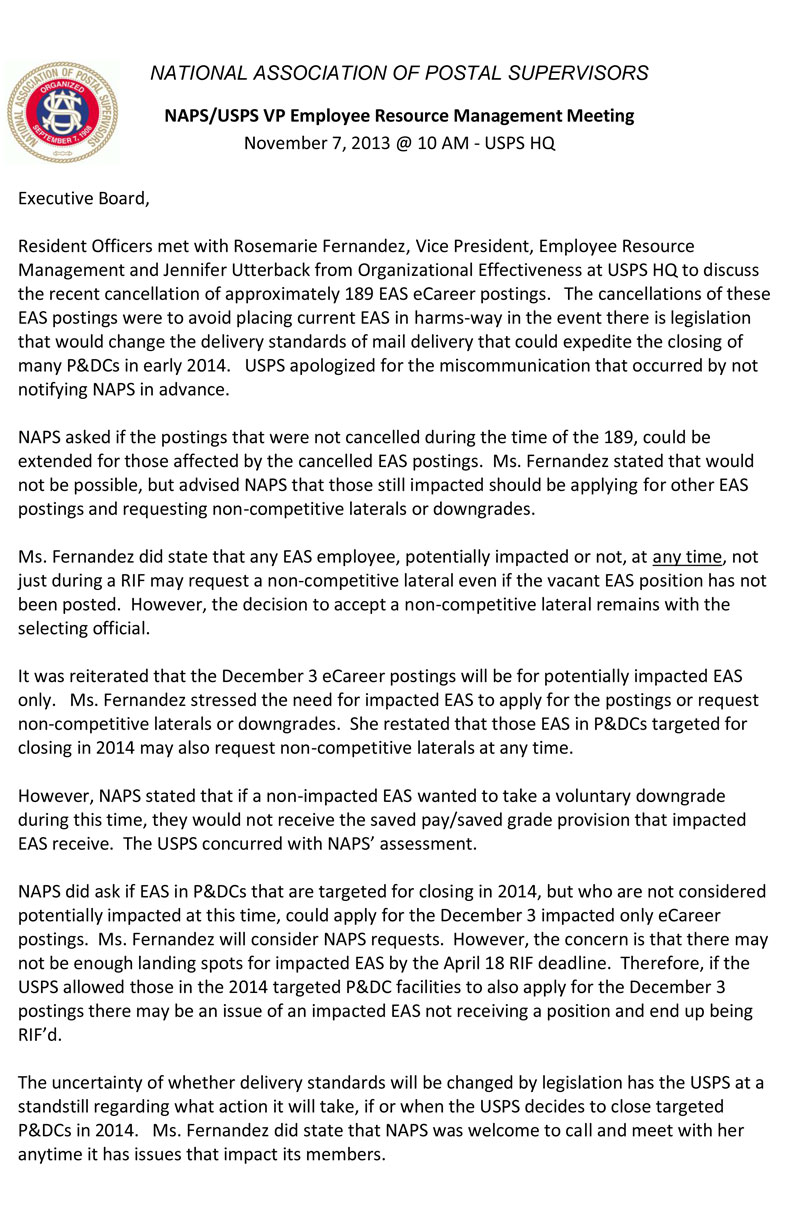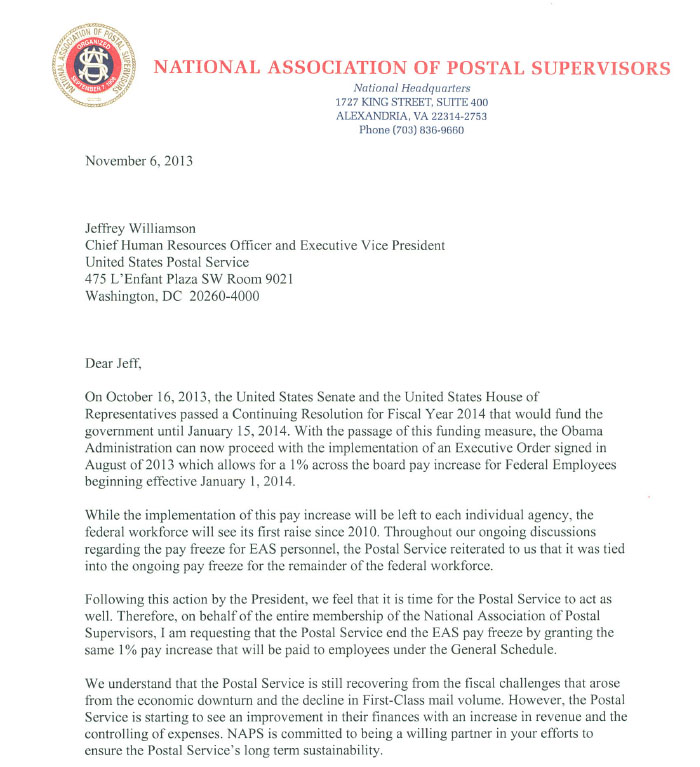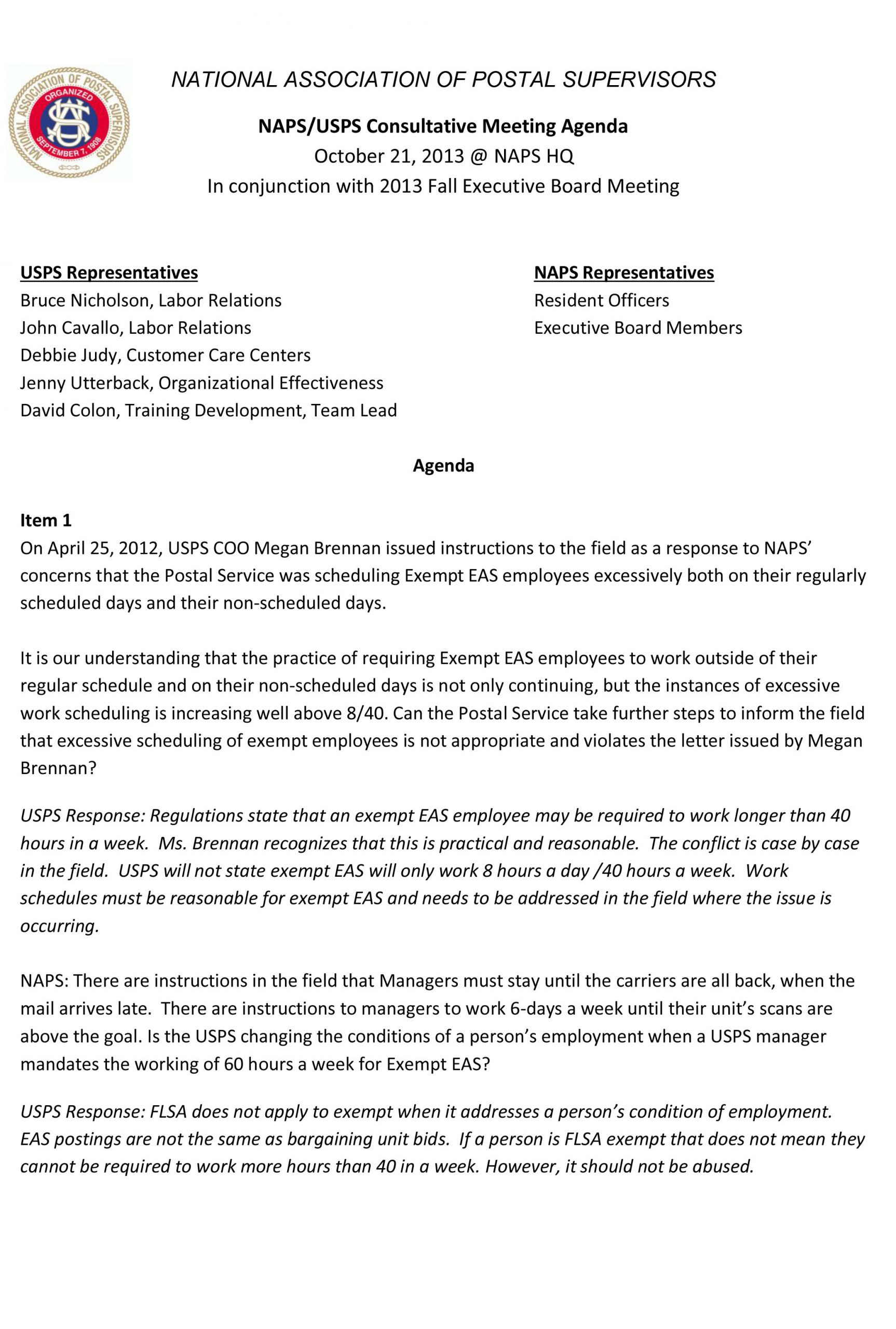NAPS Release on Budget Committee Proposals – December 10, 2013
- in News

A VIEW FROM THE BRIDGE






Date: December 4, 2013
Time: 11:00 a.m. (complimentary lunch will be served promptly at 11:00 a.m.) – meeting should conclude by 3:00 p.m.
Location: James A. Farley Post Office, Room 4500, 33rd Street and 8th Avenue, Manhattan (adjacent to Penn Station, NYC)
The Presentation will be given by the Vice President of Labor Relations, Doug Tulino. Arrangements have also been made for presentations by Rick Uluski, the USPS Northeast Area VP and Dr. Joshua Colin, the Eastern Region Area VP. Invitations have also been extended to the District Managers throughout the Northeast Area and Eastern Area to attend this important meeting. Our Executive Vice President, Jay Killackey will also provide a legislative update.
Click here for an updated list of plant rankings provided to us by the Postal Service.
What is happening? Is my job affected?
– Effective September 7, 2013, changes are being made nationwide to mail processing staffing.
– Your manager will inform you if your job is affected and will keep you informed as you move
through the organizational change/RIF process.
What should I do?
– If your job is going away, you should seek another job within the Postal Service. Your goal
should be to get a new job no later than January 11, 2014.
– If you believe you are veterans’ preference eligible for RIF purposes, you should review your
RTR Employee Detail Report in your eOPF and contact the HR Shared Service Center to
correct any error in your RIF Vet Preference Code.
– If your job is not going away, you may want to consider seeking another job within the Postal
Service. Moving to another job may create a vacancy for an impacted employee.
– You should update your eCareer profile now, before vacancies are posted.
– Monitor eCareer for job postings and talk with your manager about available jobs.
Agenda
1. With the closure of Fiscal Year 2013 at the end of September, NAPS would like to know how the Postal Service intends to complete adjective ratings on EAS employees who have gone throughout the year without established goals.
NAPS recommends that evaluating managers continue to have the option to provide a Contributor rating for an all EAS employees.
USPS Response: USPS Vice President, Labor Relations has received NAPS’ proposal and will discuss proposal with USPS HQ Chief Human Resources Officer (CHRO). USPS will provide NAPS with a response after CHRO has time to make his review.
2. We are receiving inquiries from the field about a failure in maintaining the Supervisor Differential Adjustment (SDA) between VMF EAS employees and their subordinate bargaining unit employees.
In the VMF’s there are Level 10 bargaining unit positions – VMF Lead Technician. The SDA is currently based on a Level 8 position. NAPS would like this matter to be reviewed to determine why the SDA is not based on a Level 10 position in facilities that have this higher level position?